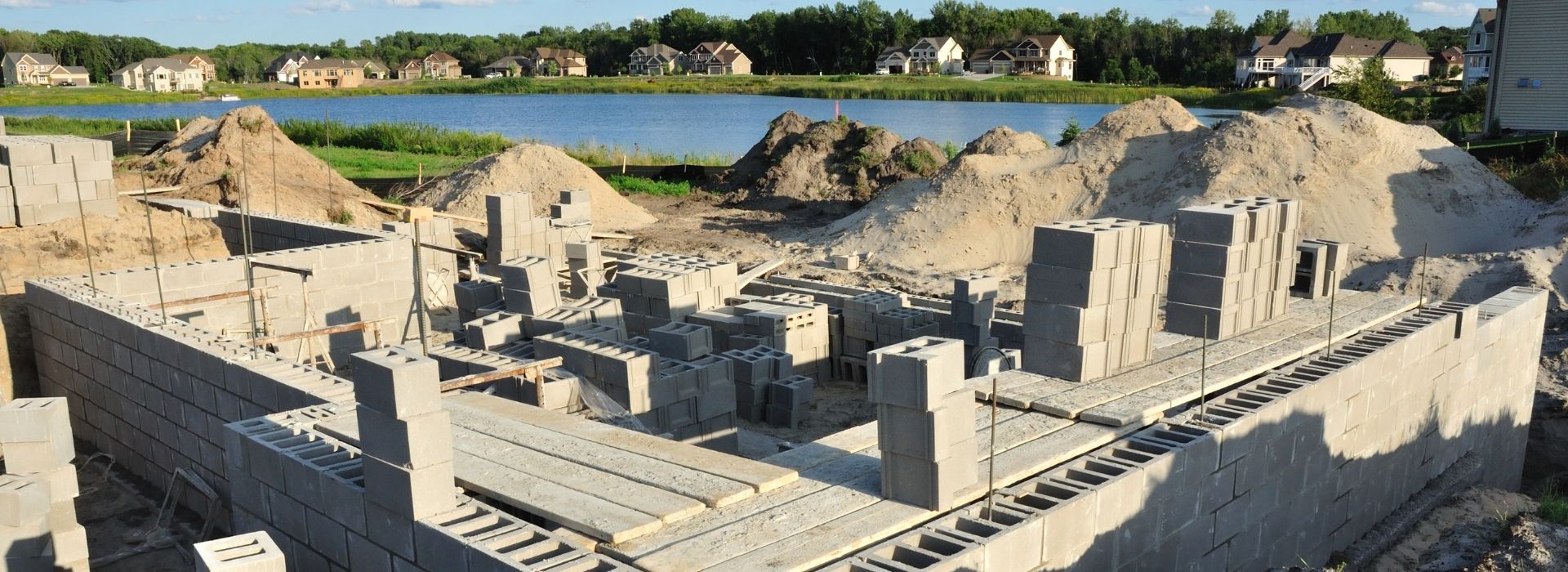Concrete blocks used in construction stand as the backbone of modern architectural practices, showcasing an unparalleled blend of versatility and robustness that has become indispensable in the realm of building and design. Known formally as concrete masonry units (CMUs), these blocks serve as the cornerstone for an array of structures, providing not only structural integrity but also opening avenues for creative and functional construction solutions. As we embark on this exploration, we will navigate through the various types of concrete blocks, unraveling their nuanced applications that extend beyond traditional walls, and delve into the profound impact they have on shaping the landscape of contemporary construction projects. From their historical roots to their present-day innovations, the journey of concrete blocks in construction underscores not just a mere building material but a dynamic force driving the evolution of architectural possibilities.
Hollow Concrete Blocks vs. Solid Concrete Blocks
In construction, the choice between hollow and solid concrete blocks significantly impacts outcomes. Solid blocks, known for density, are preferred for stability, ensuring a reliable foundation for structural components used in construction. Hollow blocks, with intentional voids, offer a lighter alternative, favored when passages for wiring or piping are essential in the construction framework.
This decision-making process involves a delicate balance between load-bearing requirements and practical considerations. Solid blocks, with inherent strength, are reliable for foundational elements demanding stability. In contrast, hollow blocks, with intentional gaps, not only address weight considerations but also allow for reinforcement with rebar, contributing to enhanced stability. The diverse applications of concrete blocks used in construction underscore the need for a nuanced understanding of specific project demands to ensure optimal results. Whether solid or hollow, these concrete blocks remain indispensable elements in the intricate tapestry of construction, shaping the built environment with their structural prowess and adaptability.
Types of Hollow Concrete Blocks Used in Construction
Hollow concrete blocks, lighter than their solid counterparts, offer insulation benefits and come in various sizes. Their intentional voids provide opportunities for diverse construction applications, setting the stage for further exploration of specific concrete blocks used in construction below.
1. Stretcher Block
Stretcher blocks, with their long, rectangular shape, are the most common type used in walls. They serve the purpose of connecting the corners of masonry units, contributing to the overall stability of the construction.
2. Pillar Block
Pillar blocks, also known as double corner blocks, are designed specifically for building pillars or piers. With a square shape and a single hole, these blocks can be stacked to create robust columns, providing stability and load-bearing capacity.
3. Lintel Block
Lintel blocks, recognizable by their U shape, play a crucial role in creating horizontal supports above openings like doors and windows. The deep grooves in these concrete blocks used in construction are filled with concrete and reinforcing bars, ensuring structural integrity and load transfer.
4. Jamb Block
Jamb blocks are essential for framing door and window openings, featuring a shallow groove on one side and a deeper groove on the other. This design facilitates proper alignment and structural integrity, particularly in the construction of double-hung windows.
5. Column Block
Square in shape with a single hole, column blocks are specifically designed for constructing columns. These blocks can be stacked to form stable pillars, with the option of reinforcing them internally for added strength.
6. Corner Block
Corner blocks are tailored for creating sharp corners in construction, whether at the ends of windows, door openings, or building corners. Their design ensures structural integrity, with the plain side exposed to the exterior and the stretcher side running parallel to the wall.
7. Splitface Block
With a textured surface, splitface blocks serve decorative purposes in walls. While vulnerable to water damage, they are less susceptible to fires. The rough, jagged texture on one edge exposes the block’s inner aggregates, adding an aesthetic dimension to their functionality.
8. Bullnose Block
Similar in structure to corner blocks, bullnose blocks distinguish themselves with rounded edges. Often used in architectural details for curved walls or edges, they contribute to both aesthetics and structural stability.
9. Partition Block
Taller than they are wide, partition blocks are utilized to create interior walls within a building. Their narrow design makes them ideal for dividing spaces, offering privacy, and enhancing the overall functionality of the structure.
Types of Solid Concrete Blocks Used in Construction

Unlike solid concrete blocks, hollow concrete blocks offer a diverse range of choices for construction purposes. These blocks, known for their versatility, are used in a variety of applications, providing options for different structural needs with concrete blocks used in construction.
1. Fly Ash Block
Fly ash blocks, incorporating waste products from coal combustion, are renowned for their eco-friendly attributes and robust strength. Commonly used for partition walls, exterior walls, and load-bearing applications, these blocks offer exceptional insulation benefits, making them a sustainable choice for various construction needs.
2. Aerated Autoclaved Block
Aerated autoclaved blocks, known as AAC blocks, stand out as lightweight materials with high sound and temperature insulation. Despite their 80% air composition, these blocks offer effective fire resistance. While versatile and easy to shape, they may require reinforcement for load-bearing purposes.
3. Paving Block
Paving blocks, available in various sizes and colors, serve as durable elements for creating visually appealing pavements, driveways, and walkways. Renowned for their strength and ease of installation, these blocks contribute to aesthetically pleasing outdoor spaces.
4. Cellular Lightweight Block
Cellular lightweight blocks, or CLC blocks, present a unique construction material designed for exceptional insulation and structural integrity. Lightweight and efficient, they find applications in roof insulation, interior and exterior walls, and partitions, yet they are not recommended for load-bearing situations with concrete blocks used in construction.
5. Expanded Clay Aggregate Block
Expanded clay aggregate blocks, composed of clay granules, cement, and water, offer lightweight construction options. Derived from natural clay and expanded at high temperatures, these blocks provide waterproof and fire-resistant properties. Their usage effectively reduces overall structural load while insulating against sound and temperature.



